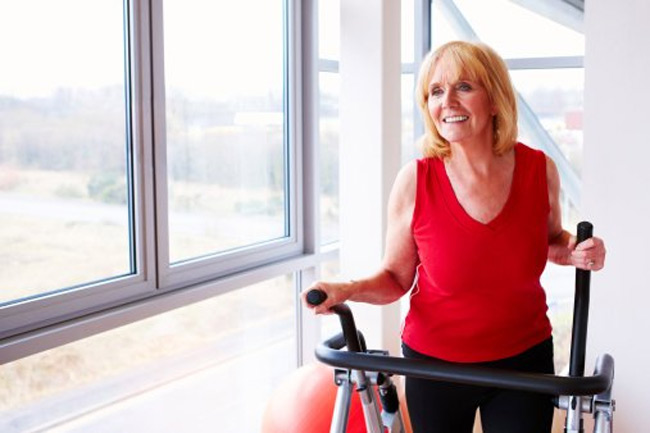
A woman can beat middle-aged spread, her disease risks, and her hot flashes with the help of her healthcare provider. And even a short term program can spell success for women and fit into a busy provider’s practice, shows a demonstration obesity-fighting and health risk reduction program detailed in an article just published online in Menopause, the journal of The North American Menopause Society (NAMS).
Making lifestyle changes can take a lot of work. Programs that have successfully helped women lose weight and reduce their other heart disease risks have been long and intensive — and they work as long as the program goes on. Most first-line women’s healthcare providers, such as obstetrician-gynecologists or primary care providers, don’t have the time and might not be reimbursed for so many consultations.
But this pilot program, called WAIPointes (WAI stands for “who am I”), took only five visits that all were reimbursed by insurance. And it kept the participants engaged in achieving their health goals by showing them that they could reduce their menopause symptoms, in addition to their long-term disease risks, with healthy lifestyle changes.
The 83 women who completed the 6-month program ranged from 35 to 55 years old, and most were in perimenopause or menopause. At an orientation, the women learned about menopause and the health risks that come with it and were told they have the opportunity to get their personal health risks assessed if they joined the program. At the first visit, they answered questionnaires and got assessments of body weight and fat and menopause status and went home with a pedometer and a health diary, educational materials, and goal-setting worksheets to develop their personal health goals. From the second to the fifth visit, each woman had health assessments including waist measurement, blood pressure, menopause symptoms, mammograms and bone density tests if needed, and blood tests to look for inflammation, high cholesterol, and diabetes.
Once a woman had her goals set, she discussed with the healthcare providers how to reach those goals, what obstacles stood in the way, and how to overcome them. If distressing menopause symptoms were obstacles, the providers offered the women treatment options, such as lifestyle modifications or medications, to overcome them.
“Empowerment through education is a cornerstone of our intervention,” wrote the authors. Their surveys of the participants and the health assessments showed that approach was working.
By the end of the program, the women understood their health risks better, and they had already made significant progress toward achieving their health goals. They trimmed their waistlines by an average of an inch and a half and lowered their diastolic blood pressure by 2 points. What’s more, their hot flashes and other menopause symptoms, such as energy, libido, mood, and vaginal dryness, had all improved significantly. And each woman had a “life action plan,” with personalized recommendations, to continue working toward their health goals.
The study done by The North American Menopause Society (NAMS).